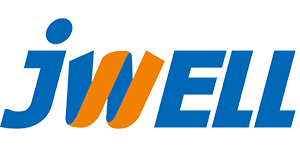Click the Follow button on any author page to keep up with the latest content from your favorite authors.
Many successful entrepreneurs, especially young ones, don’t set out trying to start a company — they stumble into a problem, find a solution and that eventually turns into a company.
While 45 is the average age of a successful startup founder, I was only a sophomore in high school when the idea for Quizlet came to me. It was 2005; the iPhone had yet to be released and Facebook had just opened up to high school students for the first time. I needed a way to quickly and efficiently study hundreds of French vocabulary words. What started as a method to ace a test (111 French animals!), caught on like wildfire and became a global tool with more than 30 million monthly users.
How I think about business has shifted significantly over the past 13 years. With age comes reflection; here are some of the lessons I learned along the way.
Like most 15-year-olds, in the beginning I was mostly focused on … myself. I would use Quizlet to study, identify something that needed to be fixed, and then quickly update the code and release something new. However, as both Quizlet and I grew up, it became clear that I had to shift focus to what was best for the masses — students and teachers all over the world.
When Quizlet raised money for the first time, we got a lot of questions we didn’t know how to answer. We had bootstrapped the business for 10 years before raising funding – which is uncommon in the tech world, though Github and Atlassian took similar paths. We had millions of people using the product, but we knew very little about how they used it. How many people share their learning content with others? How many people who sign up are still learning on the product a month later? We didn’t have the data to answer these questions.
The development of the product was based a lot on intuition, using it ourselves, and talking to other users. But, with millions of users, different people used the product for different things. For example, even though Quizlet wasn’t built for helping nursing students, hundreds of thousands of them now use it to study, and their needs vary from those of a high school student.
Our new investors pushed us to better understand our metrics, causing us to see some parts of the product really weren’t working or used at all. Today, the product analytics team plays a central role in everything we do. There’s still plenty of room for intuition and storytelling, but data informs every decision we make. We are much more thoughtful and focused as a result.
It’s human nature to want to control every aspect of your “baby,” but as a company scales, it becomes too large for one person to bear. To be successful, you need people with different types of experiences and skills and you have to come to terms with the fact that you’re not going to be good at everything, or even more jarring, that you’re really bad at some things.
I quickly realized how vital the recruiting process was. More than just having a specific skillset, I wanted people who were genuinely passionate about our company’s mission. It takes on average 71 days to fill C-level jobs, but the time we put into the search led to an amazing partner who helped me grow the business — our current CEO, Matthew Glotzbach. A lesson learned: It’s fine if hiring takes longer than you initially planned for — it means you’re being selective and careful with who you’re giving ownership to.
Revenue enables our educational mission. The more money we make, the more cool stuff we can do to help people learn. I’ve always been a very mission-driven person, and I’m passionate about improving education worldwide. The reality is though, most education startups die because they don’t make enough money — especially as the users you’re targeting (teachers and students) often aren’t the ones controlling school expenditures for technology or spending much money of their own. When I started, I wasn’t terribly interested in how Quizlet was going to make money. Now, it’s something we focus on a lot and I’m really happy about that.
The way we help a billion people learn is by building a really big business. We ask students and teachers to pay us for additional content and capabilities inside Quizlet. That means the people who like us the most are paying us directly. We also have ads, which allow us to serve tens of millions of people completely for free. This revenue model means we’re building a sustainable business that is independent and will be around for a long time.
The challenges and growing pains are changing all the time (we’ve doubled our team in the past year), so I’ve had to reinvent my role numerous times. These days, I write a completely new job description for myself every six months. In the beginning all I thought about was what to build next and how to solve user problems — and then as Quizlet began to mature, how to keep the site up when we were growing quickly.
Now we have a solid team of talented people who think about product development and platform infrastructure. It frees me up to focus on the big picture, like prototyping future product directions, hiring, keeping our company culture strong, and future funding and investments.
For all commercial enquiries related to Entrepreneur Asia Pacific, please contact sales@entrepreneurapj.com
For all editorial enquiries related to Entrepreneur Asia Pacific, please contact editor@entrepreneurapj.com
For all contributor enquiries related to Entrepreneur Asia Pacific, please contact contributor@entrepreneurapj.com
Post time: Aug-02-2019
